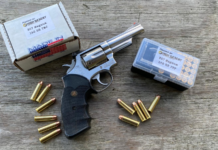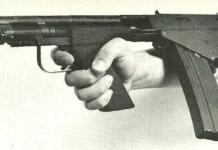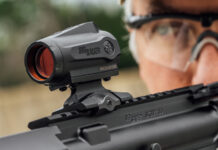The M16A1, the variant adopted fully in 1969 to correct several of the institutional errors in the first variant. It would serve and gain a solid reputation until 1983 when the Marines would introduce the A2 variant, beginning a transition to far more precise iron optical systems.
9-Hole Reviews (go follow, seriously) takes the BRN-16A1, Brownells clone of the original classic down to the 1:12 twist barrel, and puts it through their practical accuracy series.
Engaging targets 150-500 yards away you can appreciate the different theories with which different rifle systems were designed. Especially when it comes to their iron sight systems, the differences in operational design theory become apparent. The M16 and A1 variant sights were designed for direct line of sight target engagements, taking advantage of the most linear portion of the bullet’s flight path. Many rifles of the era were built along this theoretical operating design, FAL and G3 are good examples.
With the M16A2 we see a return to a far more precise sighting system like that on the M1 Garand, a precise distance dialable peep sight. Some notch sights, like the AKs, were also settable for ‘optimistic’ distances but the notch sights themselves are still more crude (though simpler) than the peep.



